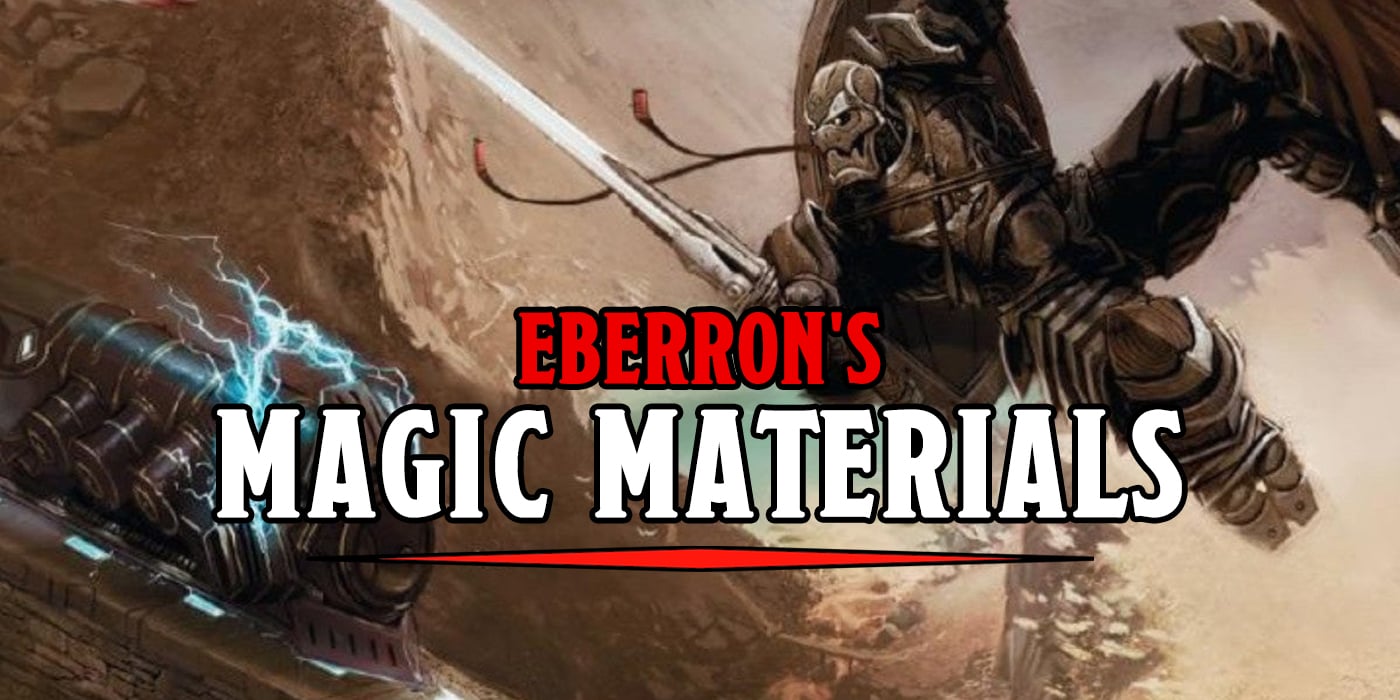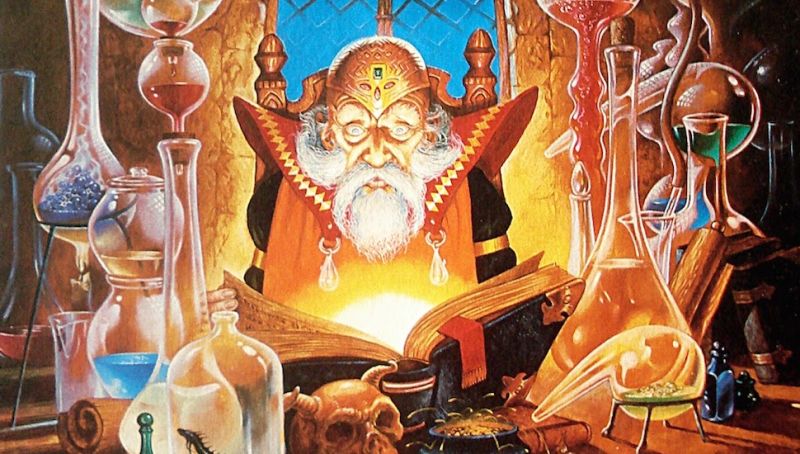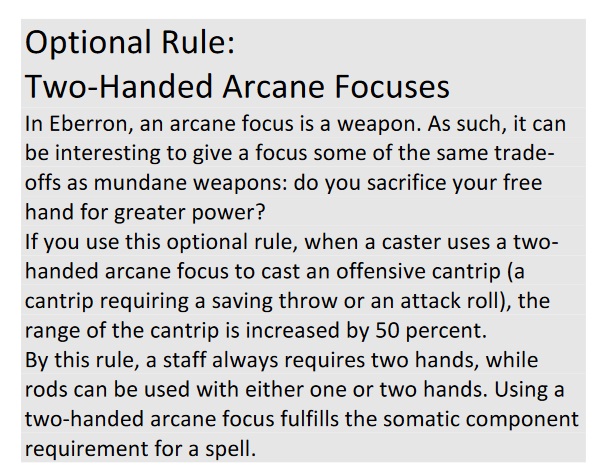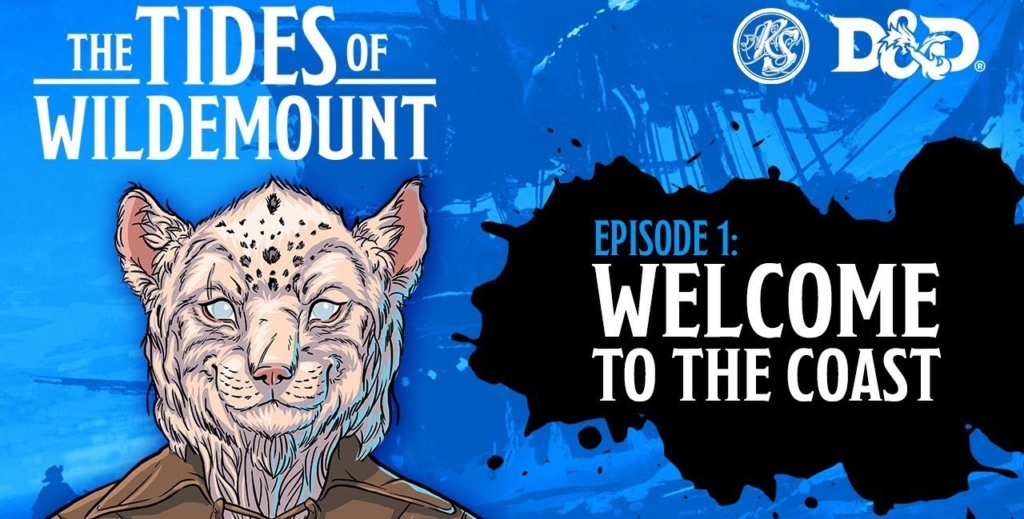D&D: Eberron’s Magical Materials Add Personality To Arcane Focuses

One of the most underrated details in Eberron is the emphasis on magical materials. From magic wood to cool crystals, Eberron has a lot to offer.
Eberron is a world full of magic. Whether it’s in the infrastructural items woven into the background of life, like the gemstones set into the lightning rail, or the elemental cores that power the skyships of Eberron, or the minor magic items that the Dragonmarked houses sometimes employ. Communication, transportation, protection, all of these things are touched on and improved by magic. Clever artificers can create magical items out of anything.
But Eberron goes a step further than other settings, like the Forgotten Realms, where there are a few broad magical ingredients like mithril or adamantine (which only appear for specific magic items). The world of Eberron explores the idea of “magic is everywhere” and extrapolates it even to magical trees. What really cooks for me is the specificity of it. As you’ll see, there’s an array of magical materials that not only make it pop, but add a lot of individuality to an option that’s otherwise chosen because you don’t want to deal with spell components. I’m talking about picking an Arcane Focus here, which is a blurb that ties in 4th Edition spellcasting options to 5th Edition and makes it so you can still use that cool tiefling miniature that’s holding a wand you got back in 2009, when 4th Edition had just launched and you were still excited about the world of possibilities it held.
Picking a Wand or an Orb or a Crystal actually has meaning. Depending on what you select you’ll gear yourself for offense or defense. And what spells you cast through them matter as well. In Eberron, picking the right Arcane focus should feel like picking a weapon almost. Will you wield a wand of Irian rosewood and smite enemies with radiant power, or will you use an Orb of Shavaran chert to defend yourself against Force damage.
I love this idea, it immerses you in the world a little more. Makes you think about how magical energy interacts with the rest of the world–which is an interesting place to be. Often Magic is just this vague thing, but in Eberron we’re getting a structure–a loose, more mystical and narrative than anything else structure, but a structure nevertheless–that outlines some of the ways Magic can work. Which gives players and DMs a little more to play around with.
There are two kinds of Arcane Focus listed in the Unearthed Arcana package, along with some variant rules that you might consider playing with. This is meant to play up the fact that your Arcane Focus is a bit like your weapon selection–it should have some bearing on how your character interacts with the world.
We can see this in the ways that an Imbued Wood Focus or an Orb of Shielding differs from the other. It’s more than just offense and defense, but that’s a good place to start. So let’s dive in and check out the Imbued Wood that permeates Eberron.
Imbued Wood Focus
Powerful manifest zones can infuse local trees with planar energies. A gifted artificer can tap into this to create a wand, staff, or rod that is especially effective at channeling a particular type of energy.
Imbued Woods are trees that have been imbued with planar power thanks to growing in the magical manifest zones where the planes that orbit Eberron make their influence felt upon the world. And a wand, staff, or rod made from one of these gets a +1 bonus to damage of its associated type.
- Fernian ash: Fire damage.
- Irian rosewood: Radiant damage.
- Kythrian manchineel: Acid or poison damage.
- Lamannian oak: Lightning or thunder damage.
- Mabaran ebony: Necrotic damage.
- Quori beech, Xorian wenge: Psychic damage.
- Risian pine: Cold damage.
- Shavarran birch: Force damage.
Even if you’re not playing in Eberron, you can still play around with special magical materials benefiting different spells. This is a great way to give your mage a little more customization. Your Ray of Frost might deal an extra +1 damage–the one downside to these (and the Orbs that follow) is that they require Attunement. I think that’s too narrow an item to require one of your precious 3 attunement slots, especially for just +1 to Fire Damage or whatever.
Orb of Shielding
Much like Imbued Wood, an Orb of Shielding is also created from special magical material aligned to one of the planes, though for Orbs it is hewn from magically imbued crystal or stone. And with Orbs it takes on a much more defensive nature–wielding an Orb of Shielding means you can use your reaction to reduce the damage by 1d4, assuming its the associated type.
- Fernian basalt: Fire damage
- Irian quartz: Radiant damage
- Kythrian skarn: Acid or poison damage
- Lamannian flint: Lightning or thunder damage
- Mabaran obsidian: Necrotic damage
- Quori celestine, Xorian marble: Psychic damage
- Risian shale: Cold damage
- Shavaran chert: Force damage\
This is again, another fantastic idea–though at only a 1d4 reduction for your reaction, I’m not sure it merits attunement. And who knows when your reaction will be worth it to reduce 1d4 points of damage. I think players will often want to save their reaction for an attack. Though again, I love this idea. I think resistance to an attack would be too much–maybe if you could somehow discharge the stored energy or use it to empower a cantrip or something it would feel about where it wants to be.
Still these are a great step forward for arcane casters. Warlocks especially will enjoy these because they have, more often than not, just one or two spells they cast routinely. And if you want to keep up with the Arcane Focus as weapons theme, why not use the optional Unearthed Arcana rule for wielding it two-handed?
I love this. It lets you pick your casting style and I think that’s really cool. I don’t know if an increase to range is what you want–though it certainly gives legs to shorter range spells like Poison Spray–but the idea that you can somehow put a little extra oomph into a cantrip can help keep beleaguered wizards and sorcerers feeling like they still have cool things to do once they’re down to only having cantrips left.
Assuming you ever even get down that low, spellswise.
That’s it for now folks.
Happy Adventuring!













